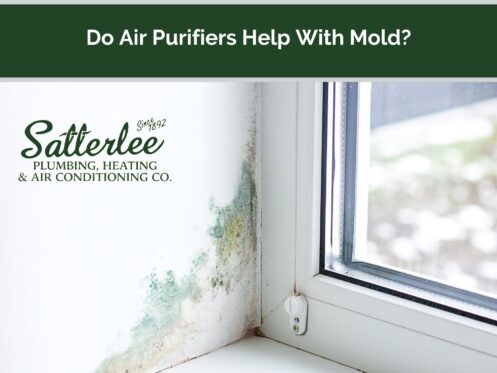Mold is a common problem that many of us face in our homes. It thrives in damp and humid environments and can not only be unsightly but also pose serious health risks. Breathing in mold spores can lead to respiratory issues and allergies, making it crucial to find effective ways to combat this issue. One solution that often comes to mind is the use of air purifiers. But do air purifiers actually help with mold?
The Function of Air Purifiers
Air purifiers work by filtering the air and removing contaminants such as dust, pet dander, and pollen. Some models are also designed to capture mold spores and prevent their circulation in the indoor air. However, it is important to understand that whole-house air purifiers alone may not completely eradicate the problem of mold in your home. They can, however, be a valuable addition to a comprehensive mold remediation plan.
HEPA Air Purifier Models
When choosing an air purifier to address mold issues, look for models that have a HEPA (High-Efficiency Particulate Air) filter. HEPA filters are able to capture particles as small as 0.3 microns, which includes most mold spores. This type of filter ensures that a significant amount of mold spores are trapped, reducing their presence in the air. Additionally, consider an air purifier that has both a pre-filter and activated carbon filter to capture larger particles and remove odors associated with mold.
While air purifiers can help trap mold spores, it is essential to address the root cause of the mold problem. Mold thrives in damp environments, so it is crucial to identify and fix any sources of moisture in your home. This could involve repairing leaks, improving ventilation, or using dehumidifiers to reduce humidity levels. By addressing the underlying causes, you can effectively prevent mold growth and decrease the need for extensive air purification.
Furthermore, it is important to understand that air purifiers work best in enclosed spaces. If you have mold in a specific room, such as a basement or bathroom, using a portable air purifier in that area can be highly effective. However, if you have widespread mold issues throughout your home, a single air purifier might not be enough. Instead, consider investing in a whole-house purifier.
Can Air Purifiers Remove Mold?
It is worth noting that while air purifiers can help trap mold spores, they cannot eliminate existing mold growth or remove the source of moisture. If you have a significant mold problem, it’s better to consult with a professional mold remediation specialist. They can assess the extent of the mold issue, determine the best course of action, and safely remove the mold from your home.
In conclusion, air purifiers can be a useful tool in managing mold issues. They effectively capture mold spores, reducing their presence in the air and minimizing the risk of health problems. However, air purifiers should be used as part of a multi-faceted approach that also includes identifying and addressing the source of moisture. By combining air purification with proper mold remediation measures, you can create a healthier and mold-free living environment. Reach out to Satterlee today to learn more about whole-house air purifiers!


